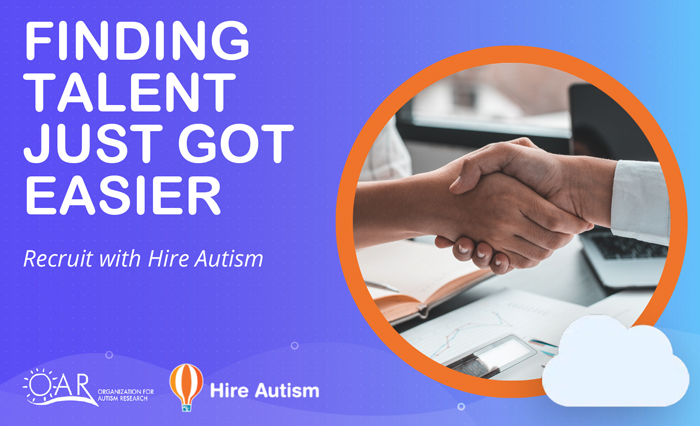Communication in the workplace is a vital key to increasing employee engagement and allowing new perspectives and voices to be heard. Once a work environment exists where all members of staff feel comfortable communicating, you are likely to see greater innovation, growth, and more effective teams (Indeed Editorial Team, 2024).
However, common neurotypical communication patterns involving abstract concepts and idioms are often challenging for autistic people to decipher. Autistic individuals communicate and process information differently from neurotypical people (Rudy, 2023).
Some communication differences observed can include but are not limited to:
- Processing delays
- Interpreting phrases literally
- Office etiquette
- Challenges with self-advocacy
As communication styles vastly differ between individuals, it is essential for employees to effectively advocate for their needs and for employers to be open and understanding of these varying requests to be successful in the workplace. Employers and employees must collaborate to identify the most effective ways to work together.
Inclusive Training for Staff
A significant first step towards enhancing communication in the workplace is to create a more inclusive workplace through staff education. At many companies, the lack of inclusive training and knowledge regarding autism can leave supervisors, managers, and colleagues ill-equipped to support their autistic colleagues. This education gap perpetuates disinformation, stereotypes, biases, and stigma around autism.
Inclusive workplace training practices can help teach staff about autism and essential concepts such as:
- Everyone has different needs
- Ask, don’t assume
- Respect boundaries
Accommodations
The accommodations process is crucial for supporting autistic employees (JAN). As such, one of the most important aspects of the accommodation process is the interactive communication between employee and employer.
Not every employee will have the same needs, making this conversation critical for employers to understand how best to provide individually tailored support to meet each employee’s needs. A good starting point for the employer and employee is to enter this conversation with an open mind and a blank slate. This allows for a thoughtful and productive discussion where both parties can learn how to coexist and operate efficiently while ensuring the needs of the individual and company are met simultaneously.
Some examples of reasonable accommodations might include:
- One-on-one meetings
- Alternate means of training
- Providing agendas ahead of time
- Closed captioning and subtitles on videos
- Alt text to images
Communicating Needs
It can be intimidating for autistic people to share their needs with their employers. The stigma around autism, fear of judgment, and anxiety around potentially being bullied in the workplace can make disclosure a difficult experience. However, it is necessary for an organization to support them.
Some tips an employee can use when disclosing to employers include:
- Preparing a script and practicing alone or with friends and family
- Focus on abilities and skills
- Review the job description and be ready to discuss the essential functions of the role
Set Boundaries
An important aspect of communicating needs is also setting boundaries in the workplace. Healthy boundaries can lead to higher levels of productivity and workplace satisfaction; however, it can be difficult for autistic people to advocate for their needs (Indeed Editorial Team, 2024).
Some important boundaries one can set include:
- Letting people know if you are uncomfortable with handshakes and physical contact
- Eating lunch by oneself
- Establishing the set hours you work
- Letting colleagues know your preferred method of communication
- Taking breaks if needed
Universal Design
When discussing accommodations, universal design is a common term one may hear. Universal design prioritizes accessibility and inclusion and seeks to create the most accommodating environment for all employees. Implementing universal design is a great way for employers to focus on equity and provide all employees with the individually tailored support they need to thrive (CAST).
Some examples of incorporating universal design into the workplace include:
- Providing multiple forms of communication, such as face-to-face meetings, virtual meetings, email, etc.
- Providing various forms of training for employees to include videos, hands-on activities, written and verbal instructions, and on-the-spot feedback.
Putting equity, accommodations, and accessibility at the forefront of workplace practices can help create an environment where everyone’s needs can be heard.
The Hire Autism Program
There are many programs and resources available for employers and autistic individuals seeking to improve workplace inclusion. One such program from the Organization for Autism Research (OAR) is the Hire Autism program, whose mission is to improve employment opportunities for autistic individuals and help businesses create more inclusive workplaces.
Hire Autism has abundant resources for job seekers and employers. Ranging from information on how to write a stellar resume to ideas on how to become a more autism-friendly employer, the information available on the Hire Autism website can help job seekers and employers create more inclusive hiring practices and workplaces. A partnership with the Hire Autism program can help employers broaden their diversity, equity, and inclusion (DEI) strategy and take steps toward becoming a more neuroinclusive, autism-friendly employer. Interested in becoming an employer partner with Hire Autism? Learn more here!
Ben VanHook, BA, is Community Support Coordinator at Organization for Autism Research.
References







